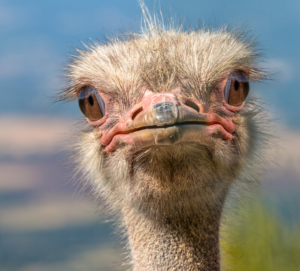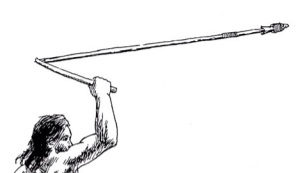I recently read Veronique Greenwood’s article, The Problematic, Newfangled Hack That Is the Human Leg and I ardently disagree with her thesis:
If you were to design a leg for a bipedal animal from scratch, what would it look like? Don’t bother looking down at your own body for inspiration—you won’t find a good model there.
This idea has been kicking around the biomechanics community for decades now, and it ignores two fundamental tenets of natural selection: first, that species do not evolve to fit an ideal (rather, they adapt to the very specific needs of the moment); and second, that every adaptation is a tradeoff.
In her article, Greenwood plays human ambulation against that of the ostrich, citing the fact that “[the ostrich has] been walking and running on land for around 250 million years [while] humans, on the other hand, just got down out of the trees yesterday in evolutionary terms . . . and it shows.”
It really doesn’t. Bipedalism is a means to an end, not an end in itself; it’s only as useful as its ability to integrate with the rest of the organism’s structure, especially the skull and forelimbs. Structurally supporting four useful limbs and a head is expensive, from a resource-management perspective.
Ostriches are hyper-specialised runners: so specialised, in fact, that natural selection couldn’t let them keep forelimbs that have hardly any biomechanical function at all. With the exception of providing a bit of balance during directional change, ostrich “wings” serve primarily as courtship displays. Their skulls, too, are tiny fractions of their structural mass, and even still must be supported on their long bow-like cervical column to achieve the kind of speed and manoeuvrability that is their birthright. The are nothing but bipeds that run fast—they’re a pair of legs with a mouth. This is what it costs to be Greenwood’s definition of a “good biped.”

Hey, Reembody guy, wanna come say that to my face?
Jerk.
Human legs, on the other hand, are not specialised to run; they’re specialised to power our mechanically miraculous hands to manipulate the environment while our giant, consciousness-generating brains abstract new and creative ways of doing it. Yeah, we’re bipedal runners, but our bipedalism is strictly adapted to serve those functions.
Greenwood quips that “the human walking apparatus wouldn’t pass muster at any decent engineering firm.” That’s like saying that a Boeing 747 would never win the Indy 500 because its wheels couldn’t handle the turns: yeah, but it can fly. The wheels are only there to facilitate the act of flying.
Through their continual impact with the ground, human legs generate the elastic tension that drives everything our upper limbs do, and natural selection decided long ago that the ability to throw projectiles with speed and accuracy was one of the most valuable adaptations we ever stumbled across. In fact, throwing predates primate bipedalism by a couple million years; we started walking upright so that we could throw better.

And so began the long, storied tradition of humans wrecking things.
Greenwood cites foot- and ankle-injury rates as examples of our unrefined bipedalism: “Humans and our ancestors have been rolling and twisting their ankles for as long we have fossil records.” That’s absolutely true; our version of bipedalism is prone to injury. But even that is a trivial concern for a human because of arguably our most powerful selected adaptation: community.
Humans are social. We live with other humans full-time and everything about our brains, bodies and behaviour indicates that we are built to rely on each other. Ostriches are only a part-time social species, spending much of their lives alone. For an ostrich, breaking an ankle is a death sentence; for a human, it’s a few weeks sitting by the fire being cared for by the tribe while it heals. Greenwood references all the specimens of rolled ankles in the fossil record, but doesn’t mention that they generally survived well beyond the injury.
So, having a riskier bipedal gait strategy isn’t really riskier if it doesn’t have a measurable impact on the individual’s survival. It’s like saying that snake’s cold-bloodedness is risky: yes, but only if they don’t live places where it’s warm, which they do, so it’s not.
Don’t get me wrong: Goodwin’s analysis of why ostriches are good runners is spot-on, and she’s clearly knowledgeable about biomechanics, physics and anatomy. I respect her work. I find her interpretation of human physiology unnecessarily disdainful, however. “Don’t feel too self-conscious about the living compromises you walk around on,” she says. “This just-good-enough system is typical of how evolution works.”
Veronique, I find that further analysis doesn’t support your glass-half-empty perspective. We’re quite a bit more wonderful than that, legs and all.

John S Smith
So far I have not seen any robot do the things that human movement can accomplish. Engineers may sneer at how the human leg works but nothing comes close to what this design accommodates, not one of them has come up with a better option. Walk, run, climb and crawl with efficiency no other design is capable of.
Erick
Its amazing someone can actually think that humans spread all over the world with astonishing success on a pair of crappy legs.